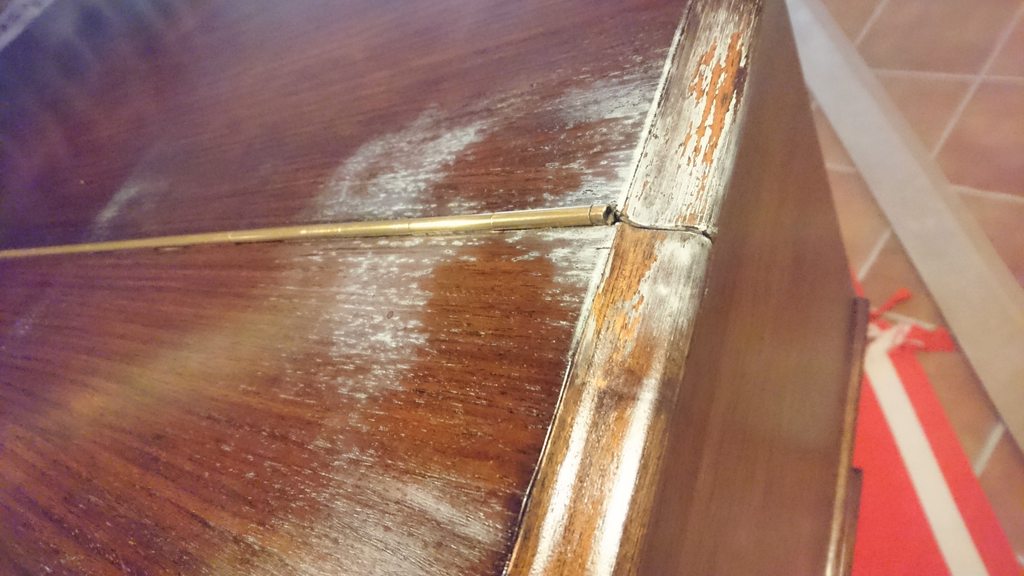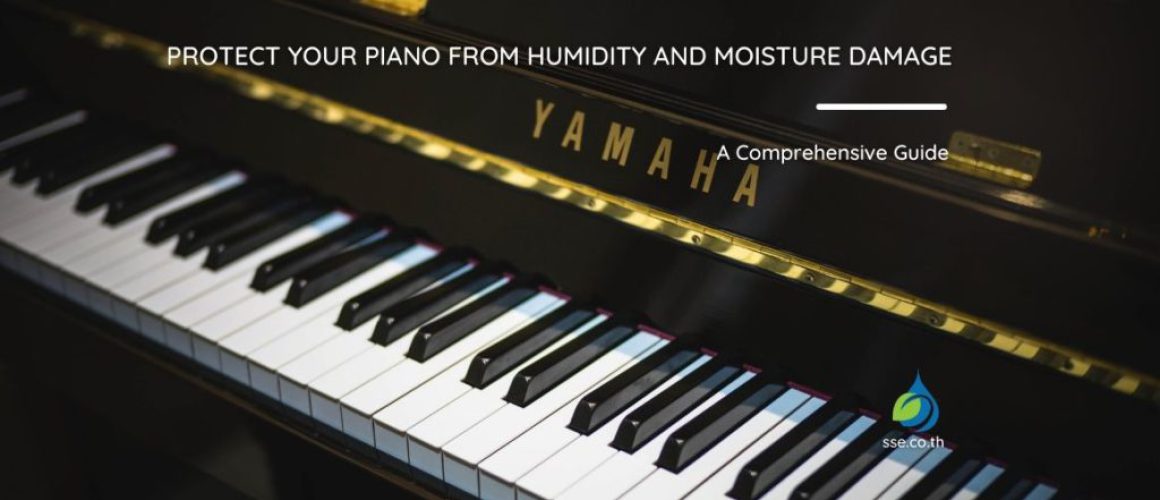Protect Your Piano from Humidity and Moisture Damage
Table of Content
Piano Humidity Control and Management
Humidity can significantly affect a piano’s performance, tuning, and longevity. Therefore, it’s essential to implement effective piano humidity control and management techniques. Dehumidifiers, humidifiers, and proper room ventilation can help maintain an ideal humidity level in your piano room. It’s crucial to monitor and control the room’s humidity regularly to prevent any potential damage to your piano.
Piano Moisture Protection and Dampness Protection
Investing in piano moisture protection and dampness protection solutions, such as piano covers and waterproof cases, can shield your instrument from moisture damage. High-quality piano covers create a barrier against dust and moisture, while waterproof cases can protect your piano during transport or storage in damp conditions.
Piano Room Humidity and Moisture Control
Designing a piano room with proper moisture control is essential to maintaining your instrument’s health. This can include installing a humidifier, dehumidifier, or both, depending on the room’s humidity levels. Additionally, ensure adequate air circulation and insulation to help regulate the room’s humidity and temperature.

Humidity Damage Prevention and Avoidance for Pianos
To prevent humidity damage, regularly inspect your piano for any signs of moisture damage, such as warping, mold, or rust. Timely piano maintenance, including tuning, cleaning, and repairs, can help you avoid costly damage caused by humidity. Moisture-resistant pianos and materials, such as composite action parts, can also offer added protection against humidity.
Piano Care in Humid Environments and Damp Climates
Piano care in humid environments and damp climates requires consistent monitoring and maintenance. Regularly check the humidity levels in your piano room, and adjust your humidifier or dehumidifier settings as needed. Additionally, ensure proper ventilation and air circulation in the room to minimize condensation and prevent mold growth.
Humidity and Piano Tuning and Pitch Stability
Humidity can affect a piano’s tuning and pitch stability. High humidity levels cause the piano’s soundboard to swell, resulting in increased string tension and sharp pitch. Conversely, low humidity levels can cause the soundboard to shrink, leading to decreased string tension and flat pitch. Regular tuning by a professional piano technician can help maintain your piano’s pitch stability, regardless of humidity fluctuations.
Piano Moisture Detection and Water Damage Identification
Detecting moisture damage early is critical for preventing severe issues with your piano. Signs of moisture damage can include warping, discoloration, rust, mold, or musty odors. If you notice any of these signs, consult a piano restoration specialist to assess the damage and recommend appropriate repairs.
Piano Storage in Humid and Moist Conditions
When storing a piano in humid or moist conditions, consider climate-controlled storage solutions. These storage facilities maintain a consistent temperature and humidity level, helping to protect your piano from moisture damage. Additionally, cover your piano with a moisture-resistant cover and ensure proper ventilation in the storage space.
Methods to Regulate Humidity Protect Your Piano from Humidity and Moisture Damage
There are several ways to control humidity and protect your piano from humidity and moisture damage:
- Use a hygrometer: A hygrometer measures the relative humidity in the room. Regularly monitoring the humidity levels helps you take appropriate action to maintain the ideal range for your piano.
- Invest in a piano humidifier and dehumidifier system: A combined piano humidifier and dehumidifier system can automatically add or remove moisture from the air around your piano. These systems can be installed directly onto your piano, providing targeted humidity control.
- Air conditioning and heating systems: Ensure your piano is not placed near air vents, radiators, or windows, as these areas can expose the instrument to sudden temperature changes and drafts that may affect humidity levels.
- Room humidifiers and dehumidifiers: These devices can help control the overall humidity in the room where your piano is located.
- Covers and insulation: Use a piano cover to protect the instrument from dust and moisture. Insulating the room and using weatherstripping around windows and doors can also help maintain consistent humidity levels.
- Desiccants: Desiccants are moisture-absorbing materials such as silica gel, natural clay, or calcium chloride. They can help absorb excess moisture in the environment surrounding your piano, effectively reducing humidity levels. Place desiccant packets or containers strategically around the piano or inside the piano cabinet (if possible). Be sure to replace or recharge the desiccants regularly, as their effectiveness diminishes over time when they become saturated with moisture. Although desiccants may not provide as precise humidity control as dedicated humidifier and dehumidifier systems, they can be a cost-effective and low-maintenance option for managing humidity levels around your piano.
Frequently Asked Questions
How do I keep moisture out of my piano?
To keep moisture out of your piano, maintain consistent humidity levels in the room, use a piano humidifier and dehumidifier system, and place the piano away from sources of moisture such as windows, doors, and vents. Additionally, consider using a piano cover to protect the instrument from dust and moisture.
What does moisture do to a piano?
Moisture can cause a piano’s wooden components to expand, leading to sticky keys, a warped soundboard, and rust on strings and other metal parts. In contrast, low humidity can cause wood to shrink, resulting in loose tuning pins, cracking soundboard or pinblock, and unstable tuning.
Does humidity damage pianos?
Yes, humidity can damage pianos. Both high and low humidity levels can cause issues with a piano’s wooden components, sound quality, and overall lifespan. It’s essential to maintain consistent humidity levels within the recommended range of 40% to 50% to minimize the risk of humidity-related damage.
Do you need to humidify a piano?
Whether or not you need to humidify a piano depends on the humidity levels in your environment. If the humidity consistently falls below the recommended range of 40% to 50%, a humidifier can help maintain the appropriate moisture levels and protect your piano from humidity and moisture damage.
How does humidity affect piano performance and tuning?
Humidity can cause the piano’s soundboard to swell or shrink, affecting string tension and resulting in pitch variations. Regular tuning by a professional can help maintain pitch stability.
What are the best ways to protect my piano from moisture damage?
Implement humidity control measures, use piano covers or waterproof cases, and perform regular maintenance to protect your piano from humidity and moisture damage.
How can I control the humidity level in my piano room?
Install a humidifier, dehumidifier, or both, depending on the room’s humidity levels. Ensure proper ventilation and air circulation to regulate humidity.
What are the signs of moisture damage in a piano?
Signs of moisture damage can include warping, discoloration, rust, mold, or musty odors. If you notice any of these signs, consult a piano restoration specialist.
How often should I check the humidity levels in my piano room?
Ideally, you should check the humidity levels in your piano room daily, adjusting your humidifier or dehumidifier settings as needed to maintain an optimal environment for your piano.
What is the recommended humidity level for a piano room?
The recommended humidity level for a piano room is between 40% and 50% relative humidity. This range helps minimize the effects of humidity on the piano’s performance and longevity.
Can a piano be repaired if it has sustained moisture damage?
Depending on the extent of the damage, a piano restoration specialist may be able to repair moisture-damaged components, such as the soundboard, strings, or action parts. In some cases, it may be more cost-effective to replace the damaged piano with a new one.
What should I do if I need to transport or store my piano in a damp or humid environment?
When transporting or storing a piano in a damp or humid environment, use a waterproof case or moisture-resistant cover to protect it. If possible, choose a climate-controlled storage facility that maintains consistent temperature and humidity levels.
Piano Maintenance Tips for Humid Climates
If you live in a humid climate, it’s essential to follow a few key piano maintenance tips to ensure your instrument’s longevity and performance. Here are some suggestions for taking care of your piano in humid conditions and protect your piano from humidity and moisture damage.
- Regularly clean your piano: Dust and clean your piano regularly to prevent the buildup of dirt, which can attract moisture and potentially cause damage. Use a soft, dry cloth to clean the keys and exterior surfaces, and consult a professional piano technician for internal cleaning.
- Use a room humidifier and dehumidifier: Depending on the room’s humidity levels, you may need to use a room humidifier or dehumidifier to maintain the ideal humidity level for your piano (between 40% and 50% relative humidity).
- Schedule regular tuning and maintenance: Humidity fluctuations can affect your piano’s tuning and overall performance. Schedule regular tuning and maintenance with a professional piano technician to keep your instrument in optimal condition.
- Monitor room ventilation: Ensure proper ventilation in your piano room to help regulate humidity levels and prevent condensation. This may involve using fans, air conditioning, or adjusting windows and doors to encourage air circulation.
- Invest in a piano cover: A high-quality piano cover can help protect your instrument from dust and moisture. Choose a cover that is breathable and moisture-resistant.
- Avoid placing your piano near sources of moisture: Keep your piano away from windows, doors, and air vents where moisture can easily accumulate. Also, avoid placing your piano in damp or poorly ventilated areas of your home.
- Inspect your piano for signs of moisture damage: Regularly check your piano for any signs of moisture damage, such as warping, discoloration, rust, or mold. If you notice any issues, consult a piano restoration specialist to assess the damage and recommend appropriate repairs.
The Importance of a Climate-Controlled Environment for Pianos
Creating a climate-controlled environment for your piano is crucial in preserving its sound quality and preventing potential damage. Here’s why it’s essential to maintain consistent temperature and humidity levels for your instrument:
Temperature and Humidity Fluctuations
Extreme temperature and humidity fluctuations can cause the wooden components of your piano to expand and contract. This can lead to warping or cracking, which can negatively impact your piano’s sound and performance. Additionally, fluctuating humidity levels can cause strings to rust and tuning pins to loosen, making it difficult to keep your piano in tune.
Protecting the Soundboard
The soundboard is a critical component of your piano, responsible for amplifying its sound. A climate-controlled environment helps maintain the soundboard’s structural integrity, ensuring it remains flat and free of cracks. This is essential for preserving the piano’s tonal quality and resonance.
Maintaining the Piano’s Action
The action is the mechanical component of the piano that connects the keys to the hammers, allowing them to strike the strings when you play. Changes in humidity can cause the action parts to swell or shrink, leading to sluggish or uneven key response. By maintaining a consistent environment, you can prevent these issues and ensure your piano’s action remains in optimal condition.
Preserving the Piano’s Exterior
A stable climate is also essential for maintaining the piano’s exterior finish. Excessive humidity can cause the finish to crack, peel, or develop mold, while extreme temperature fluctuations can lead to veneer separation or other cosmetic damage.
Tips for Creating a Climate-Controlled Environment
To create a climate-controlled environment for your piano, consider the following tips:
- Invest in a hygrometer to monitor humidity levels in your piano room.
- Use a room humidifier or dehumidifier to maintain the recommended humidity levels (40%-50% relative humidity).
- Keep your piano away from direct sunlight, radiators, air vents, or other heat sources.
- Avoid placing your piano near exterior walls or windows where temperature fluctuations are more likely to occur.
- Insulate your piano room to maintain a consistent temperature and humidity level.
Understanding the Effects of Moisture on Piano Strings and Tuning Stability
Moisture can have a significant impact on piano strings and tuning stability. Here’s an overview of how moisture affects these crucial components and some tips for minimizing the potential for damage.
The Impact of Moisture on Piano Strings
Piano strings are typically made of steel, which is susceptible to rust and corrosion when exposed to moisture. Rust can cause the strings to become brittle and more likely to break. Additionally, rust can create friction between the strings and the tuning pins, making it difficult to keep the piano in tune.
How Moisture Affects Tuning Stability
Moisture can also affect the wooden components of the piano, such as the pinblock and soundboard. The pinblock is responsible for holding the tuning pins securely in place. When exposed to moisture, the wood can swell, causing the tuning pins to loosen and the piano to lose its tuning stability. Similarly, moisture can cause the soundboard to warp, which can alter the piano’s tone and resonance.
Tips for Protecting Your Piano from Moisture Damage
To protect your piano from humidity and moisture damage and maintain its tuning stability, consider the following tips:
- Monitor humidity levels in your piano room using a hygrometer and maintain the recommended humidity levels (40%-50% relative humidity) using a humidifier or dehumidifier as needed.
- Keep your piano away from windows, doors, and air vents where moisture can easily accumulate.
- Avoid placing your piano in damp or poorly ventilated areas of your home.
- Regularly inspect your piano for signs of moisture damage, such as rust, discoloration, warping, or mold. If you notice any issues, consult a piano technician or restoration specialist.
- Schedule regular tuning and maintenance appointments with a professional piano technician to ensure your instrument remains in optimal condition.
Conclusion
Proper humidity control is essential for maintaining the health and longevity of your piano. By investing in a piano humidifier and dehumidifier system, monitoring humidity levels with a hygrometer, and following a routine of regular care and maintenance, you can protect your piano from humidity and moisture damage and ensure its lasting performance and sound quality.
The Impact of Humidity on Various Industries and How Desiccants Can Help

